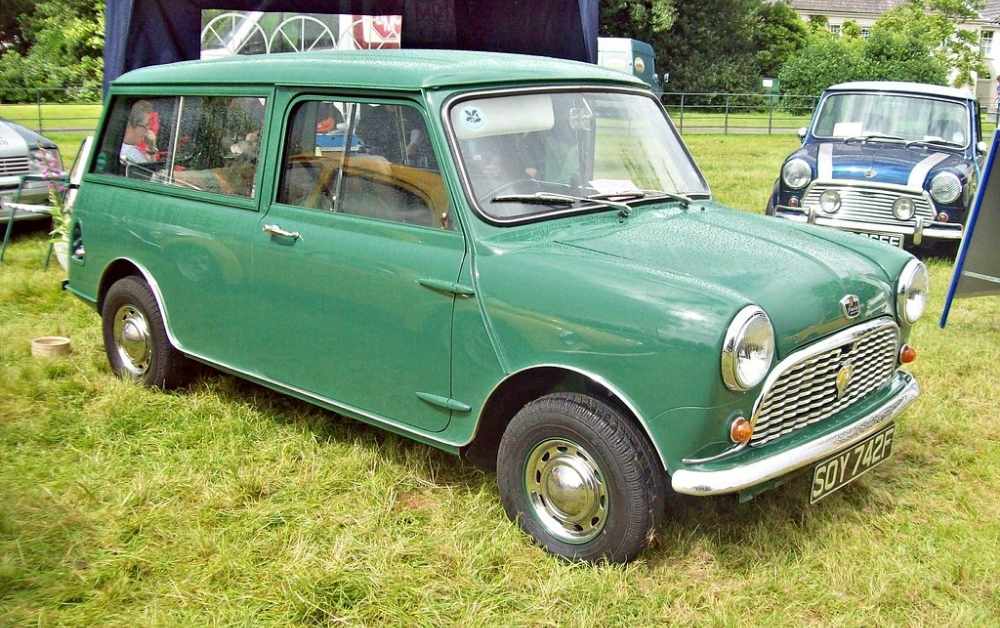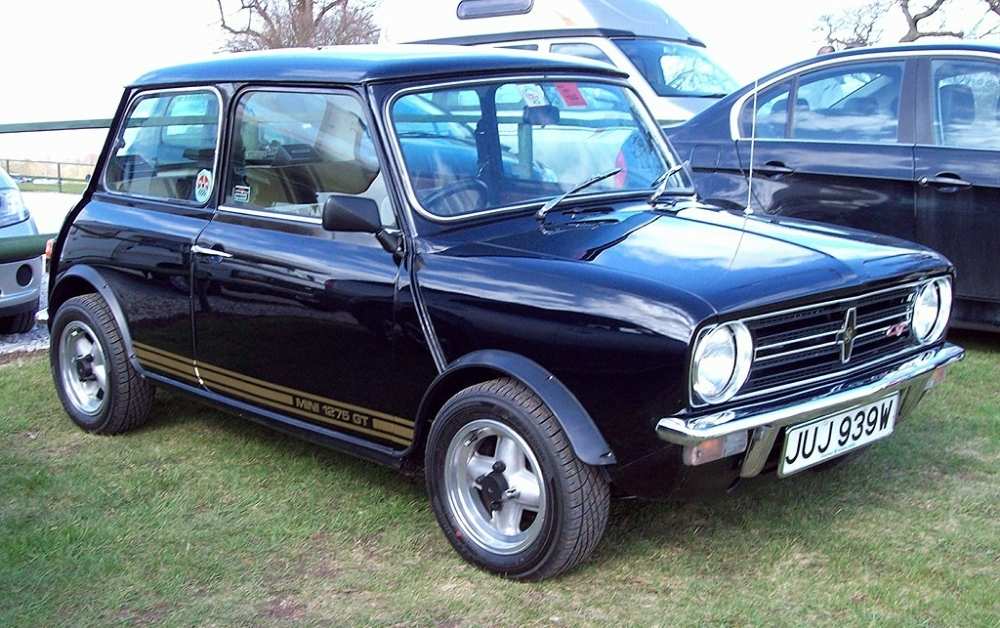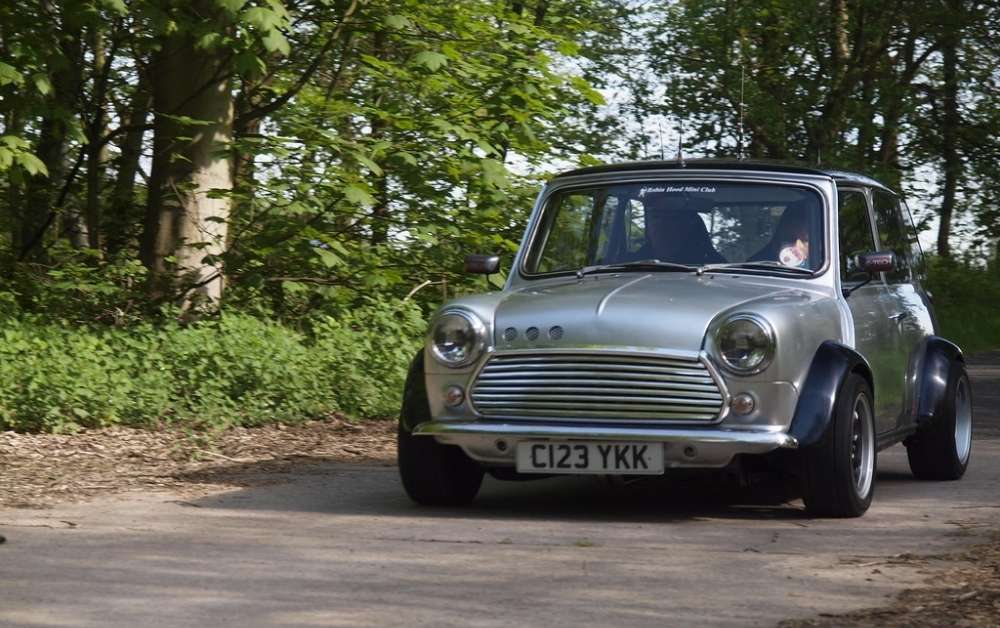Classic Mini: Motaclan’s Complete Guide (1959–2000) | Models, History & Legacy
Welcome to *Marque of the Month*, a Motaclan series celebrating the most iconic names in British motoring history. This month, we’re shining a spotlight on the Classic Mini—a revolutionary small car that redefined urban driving, motorsport, and pop culture. Loved for its compact design, go-kart handling, and enduring charm, the Mini remains one of Britain’s most treasured automotive icons.
Follow Motaclan on social media for exclusive video content, expert insights, and behind-the-scenes coverage of this legendary vehicle.
The History of the Classic Mini: A British Motoring Icon
The Classic Mini, produced from 1959 to 2000, was a revolutionary small car that redefined British motoring. Designed by Sir Alec Issigonis, it set new standards with its space-efficient layout, front-wheel-drive system, and agile handling. More than just a car, the Mini became a cultural icon—embraced by everyday drivers, motorsport legends, and celebrities alike.
Built in Longbridge, Birmingham, and later at other locations, the Mini was a testament to British engineering ingenuity. From its dominance on the rally stage—including three Monte Carlo Rally victories—to its starring role in The Italian Job, the Mini’s influence extended far beyond the road.
With over five million units sold, the Classic Mini remains one of the most beloved and recognisable cars in history. Its enduring popularity is a tribute to its innovative design, timeless charm, and spirited driving experience.
Highlights of the Classic Mini’s Success
The Classic Mini proved its dominance in both motorsport and cultural influence, earning numerous accolades that cemented its status as a British motoring legend, including:
Best-Selling British Car – With over five million units sold between 1959 and 2000, the Mini became one of the most successful small cars in history.
Motorsport Triumphs – The Mini Cooper S stunned the racing world with victories in major events, including the Monte Carlo Rally in 1964, 1965, and 1967.
Monte Carlo Rally Wins – Against larger, more powerful rivals, the Mini’s lightweight design and nimble handling led it to multiple rally victories, proving its performance credentials.
Endurance and Speed Records – From rally stages to touring car championships, the Mini showcased remarkable durability and racing pedigree.
Cultural Icon – Immortalised in films like The Italian Job (1969), the Mini became a symbol of 1960s cool. Its influence continued in modern media, appearing on Top Gear and remaining a favourite among celebrities, including The Beatles, Steve McQueen, and James Hunt.
With a legacy that blends innovation, performance, and cultural impact, the Classic Mini remains one of the most enduring and recognisable cars ever built.
Key Years in the Classic Mini’s Production
The Classic Mini’s production timeline is filled with milestones that highlight its evolution, engineering advancements, and enduring popularity. Here are the key years:
1959 – The Mini is launched, designed by Sir Alec Issigonis for the British Motor Corporation (BMC). Its revolutionary front-wheel-drive layout and compact size redefine small car design. Initially sold as the Austin Seven and Morris Mini-Minor, it quickly gains popularity.
1961 – The Mini Cooper is introduced, developed in collaboration with John Cooper. Featuring an upgraded 997cc engine and sportier handling, it sets the stage for motorsport success.
1963 – The Mini Cooper S debuts with a more powerful 1071cc engine, later expanded to 1275cc. This variant dominates in rallying, securing its place in motorsport history with Monte Carlo Rally victories.
1967 – The Mini receives MkII updates, including a redesigned grille, a larger rear window, and mechanical improvements. Production expands as demand continues to grow worldwide.
1969 – British Leyland phases out the Austin and Morris branding, with the car now simply called the Mini. MkIII updates include hidden door hinges and winding windows.
1971 – The 1275 GT is introduced as a sportier Mini variant, replacing the Cooper S in some markets.
1980 – Despite the rise of newer compact cars, the Mini remains a bestseller, gradually shifting from an economy car to a lifestyle icon.
1990 – The Mini Cooper returns with a 1275cc engine, reigniting enthusiasm for performance variants.
1994 – BMW acquires Rover Group, inheriting the Mini brand and paving the way for future developments.
2000 – After more than 5.3 million units sold, Classic Mini production officially ends at Longbridge, concluding an incredible 41-year run. However, its legacy lives on through a passionate global community of enthusiasts and collectors.
Classic Mini Models: A Closer Look
The Classic Mini was produced from 1959 to 2000, evolving through multiple models and variations under different brands, including Austin, Morris, Riley, Wolseley, Leyland, and Rover. Below is a complete list of every major Classic Mini model produced during this time.
Early Models (1959–1967) – The Revolutionary Beginning
The Mini was launched in 1959, designed by Sir Alec Issigonis as an affordable, fuel-efficient small car. Its front-wheel-drive layout, transverse engine, and space-saving design were revolutionary, making it an instant success. During this period, the Mini also gained popularity in motorsport, with performance versions like the Cooper and Cooper S setting the stage for rallying dominance.
Austin Seven (1959–1967) – The Original Mini
The Austin Seven was one of the two original Mini models launched in 1959, designed for the British Motor Corporation (BMC). With its innovative engineering and affordability, it revolutionised small car manufacturing.
- Units Produced: Over 1 million (before being renamed Austin Mini)
- Current Market: Estimated 10,000–15,000 still on the road
- Launch Price: £496 in 1959 (equivalent to ~£13,000 in 2025)
- Current Value: £5,000–£20,000
Key Revisions
- 1959: Launched with an 848cc A-series engine
- 1961: Hydrolastic suspension introduced on later models
- 1962: Improved door seals and minor interior refinements
- 1967: Renamed the Austin Mini as the “Seven” branding was phased out
Morris Mini-Minor (1959–1967) – The Twin to the Austin Seven
Launched simultaneously with the Austin Seven, the Morris Mini-Minor was identical in design and mechanics, with differences limited to badging and dealership networks.
- Units Produced: Over 1 million
- Current Market: Estimated 10,000–15,000 still in existence
- Launch Price: £497 in 1959 (~£13,000 in 2025)
- Current Value: £5,000–£20,000
Key Revisions
- 1959: Introduced as the Morris counterpart to the Austin Seven
- 1961: Optional heater added
- 1962: Minor design refinements, including improved trim
- 1967: Rebranded as the Morris Mini for a unified marketing approach
Mini Van (1960–1982) – The Hardworking Mini
The Mini Van was a commercial variant featuring an extended wheelbase and no rear side windows, making it ideal for businesses and tradespeople.
- Units Produced: Over 500,000
- Current Market: Estimated 3,000–5,000 still on the road
- Launch Price: £360 in 1960 (~£9,500 in 2025)
- Current Value: £8,000–£25,000
Key Revisions
- 1960: Launched as a cost-effective work vehicle
- 1967: MkII version introduced with revised grille and lights
- 1978: Final updates before production ended in 1982
Mini Pick-up (1961–1983) – A Mini with Utility
Based on the Mini Van, the Pick-up featured an open cargo bed, making it popular for light commercial work.
- Units Produced: Over 58,000
- Current Market: Estimated 1,500–2,500 still surviving
- Launch Price: £360 in 1961 (~£10,000 in 2025)
- Current Value: £10,000–£30,000
Key Revisions
- 1961: Introduced as a compact utility vehicle
- 1967: MkII updates, including revised doors and lights
- 1983: Production ended as larger vans replaced it
Morris Mini Traveller (1960–1969) & Austin Seven Countryman (1960–1969) – The Classic Mini Estate
These estate versions featured an extended body and wooden exterior trim, earning them the nickname “Woody Wagons.”
- Units Produced: Over 200,000 (both models combined)
- Current Market: Estimated 5,000–7,500 still in existence
- Launch Price: £585 in 1960 (~£15,500 in 2025)
- Current Value: £10,000–£30,000
Key Revisions
- 1960: Launched with a longer wheelbase and rear barn doors
- 1962: Minor trim changes
- 1967: MkII version introduced with design tweaks
Mini Cooper (1961–1969) – The Birth of a Motorsport Icon
Developed with John Cooper, the Mini Cooper featured a 997cc engine, improved brakes, and sportier suspension, quickly making its mark in motorsport.
- Units Produced: Over 150,000
- Current Market: Estimated 10,000–15,000 still on the road
- Launch Price: £680 in 1961 (~£18,000 in 2025)
- Current Value: £15,000–£40,000
Key Revisions
- 1961: Launched with a 997cc engine
- 1964: Engine upgraded to 998cc
- 1967: Final MkII version before production ended in 1969
Mini Cooper S (1963–1971) – The Ultimate Racing Mini
The Mini Cooper S was a high-performance version with engine sizes of 970cc, 1071cc, and later 1275cc, dominating rally racing, including multiple Monte Carlo Rally wins.
- Units Produced: ~70,000
- Current Market: Estimated 8,000–10,000 still in existence
- Launch Price: £695 in 1963 (~£18,500 in 2025)
- Current Value: £20,000–£50,000
Key Revisions
- 1963: Launched with a 1071cc engine
- 1964: 1275cc version introduced, solidifying its racing legacy
- 1971: Production ended, but its motorsport reputation endured
Wolseley Hornet & Riley Elf (1961–1969) – The Luxury Minis
The Wolseley Hornet and Riley Elf were upmarket Mini variants, featuring a longer rear end, improved interiors, and additional chrome detailing.
- Units Produced: Wolseley Hornet (~28,000), Riley Elf (~31,000)
- Current Market: Estimated 3,000–5,000 of each still exist
- Launch Price: £660 in 1961 (~£17,500 in 2025)
- Current Value: £12,000–£30,000
Key Revisions
- 1961: Introduced as luxury Mini variants
- 1966: MkIII versions introduced with wind-up windows
- 1969: Production ended
MkII Models (1967–1969) – Refinement and Expansion
By 1967, the Mini had already become a global sensation. The MkII update introduced a wider grille, a larger rear window, and mechanical improvements, refining the design while maintaining the Mini’s signature agility. As the Mini continued to dominate both roads and rally circuits, it reinforced its reputation for durability and performance.
Austin Mini MkII (1967–1969) – A Facelifted Classic
The Austin Mini MkII was an updated version of the original Mini, featuring a wider grille, a larger rear window, and minor mechanical refinements. While retaining the charm and handling of the MkI, this version modernised the Mini’s design for the late 1960s market.
- Units Produced: ~470,000 (across all MkII variants)
- Current Market: Estimated 10,000–15,000 still in existence
- Launch Price: £590 in 1967 (~£14,000 in 2025)
- Current Value: £6,000–£18,000
Key Revisions
- 1967: Introduced with a wider grille and larger rear window for improved visibility
- 1968: Minor interior updates and new colour options introduced
- 1969: Final year before the introduction of the MkIII Mini
Morris Mini MkII (1967–1969) – The Morris-badged Facelift
The Morris Mini MkII was mechanically identical to the Austin Mini MkII, featuring the same styling upgrades. Sold through Morris dealerships, it retained its distinct badging until the early 1970s, when the Mini name was fully unified.
- Units Produced: Part of the ~470,000 MkII total
- Current Market: Estimated 10,000–15,000 still in existence
- Launch Price: £590 in 1967 (~£14,000 in 2025)
- Current Value: £6,000–£18,000
Key Revisions
- 1967: Introduced with a wider grille and revised trim
- 1968: Improved seating materials and dashboard layout
- 1969: End of production as British Leyland phased out the Morris branding for Minis
Mini Cooper MkII (1967–1969) – A Refined Rally Icon
The Mini Cooper MkII was a refined version of the original Cooper, incorporating the wider grille and larger rear window from the standard MkII Mini. While it retained the 998cc engine, it featured minor tuning enhancements and continued to be a favourite in motorsport and rallying.
- Units Produced: ~16,000
- Current Market: Estimated 5,000–7,500 still in existence
- Launch Price: £695 in 1967 (~£16,500 in 2025)
- Current Value: £15,000–£35,000
Key Revisions
- 1967: Launched with an updated grille, larger rear window, and revised lights
- 1968: Slight engine tweaks for improved performance
- 1969: Final production year before the Cooper name was temporarily retired
Mini Cooper S MkII (1967–1970) – The Ultimate MkII Performance Mini
The Mini Cooper MkII was a refined version of the original Cooper, incorporating the wider grille and larger rear window from the standard MkII Mini. While it retained the 998cc engine, it featured minor tuning enhancements and continued to be a favourite in motorsport and rallying.
- Units Produced: ~16,000
- Current Market: Estimated 5,000–7,500 still in existence
- Launch Price: £695 in 1967 (~£16,500 in 2025)
- Current Value: £15,000–£35,000
Key Revisions
- 1967: Launched with an updated grille, larger rear window, and revised lights
- 1968: Slight engine tweaks for improved performance
- 1969: Final production year before the Cooper name was temporarily retired
MkIII and Leyland Era (1969–1980) – A Changing Market
In 1969, British Leyland rebranded the Mini, officially dropping the Austin and Morris names to unify the model under a single identity. The Mini Clubman was introduced as a more modern alternative, featuring a squared-off front end and updated styling. Around this time, evolving safety regulations began influencing the Mini’s design, leading to structural and mechanical refinements. Despite these changes and increasing competition from newer small cars, the Mini remained hugely popular, continuing to capture the hearts of drivers worldwide.
Mini 850 (1969–1980) – The Essential Mini
The Mini 850 was the most basic and affordable version of the Mini, powered by an 848cc A-Series engine. Designed as an entry-level economy car, it remained popular throughout the 1970s, appealing to budget-conscious drivers looking for simple, reliable motoring.
- Units Produced: Over 1 million (across various trims)
- Current Market: Estimated 15,000–20,000 still in existence
- Launch Price: £550 in 1969 (~£10,000 in 2025)
- Current Value: £3,000–£12,000
Key Revisions
- 1969: Launched as the new entry-level Mini under British Leyland
- 1976: Slight modifications to bumpers and trim
- 1980: Discontinued as newer small cars overtook its market appeal
Mini 1000 (1969–1980) – A Small Power Boost
The Mini 1000 was a step up from the 850, featuring a more capable 998cc engine that offered improved performance and refinement. It remained a strong seller throughout the 1970s and was considered the “best all-round” Mini for everyday driving.
- Units Produced: Over 1 million
- Current Market: Estimated 20,000+ still in existence
- Launch Price: £600 in 1969 (~£11,500 in 2025)
- Current Value: £4,000–£15,000
Key Revisions
- 1969: Introduced as a mid-range Mini option
- 1974: Rubber bumpers added to comply with new safety regulations
- 1980: Discontinued in favour of newer trim levels
Mini Clubman (1969–1980) – A Bold New Look
The Mini Clubman introduced a squared-off front end and a more modern interior, offering a fresh alternative to the classic Mini design. Intended as a more upmarket model, it failed to fully replace the original Mini but developed a loyal following.
- Units Produced: Over 640,000
- Current Market: Estimated 10,000–15,000 still in existence
- Launch Price: £750 in 1969 (~£14,500 in 2025)
- Current Value: £6,000–£20,000
Key Revisions
- 1969: Launched with a distinctive flat-front grille
- 1975: Interior updates, including better dashboard materials
- 1980: Discontinued as the classic round-nose Mini remained more popular
Mini Clubman Estate (1969–1982) – Practical and Stylish
The Mini Clubman Estate replaced the Traveller and Countryman models, featuring the same elongated body style but with Clubman-style front-end styling. It was a popular choice for families and businesses looking for extra cargo space.
- Units Produced: Over 197,000
- Current Market: Estimated 5,000–7,500 still in existence
- Launch Price: £800 in 1969 (~£15,500 in 2025)
- Current Value: £7,000–£22,000
Key Revisions
- 1969: Introduced as a replacement for the Mini Traveller and Countryman
- 1974: Safety regulations led to rubber bumper updates
- 1982: Discontinued in favour of more modern estate cars
Mini 1275 GT (1969–1980) – The Cooper’s Successor
The Mini 1275 GT was introduced as a sportier alternative to the standard Mini, featuring a 1275cc engine, a Clubman-style front end, and upgraded brakes. While it lacked the raw performance of the original Cooper S, it was an affordable alternative with better reliability.
- Units Produced: ~110,000
- Current Market: Estimated 5,000–8,000 still in existence
- Launch Price: £800 in 1969 (~£16,000 in 2025)
- Current Value: £8,000–£30,000
Key Revisions
- 1969: Launched as a performance-focused replacement for the Cooper S
- 1975: Minor trim and interior updates
- 1980: Discontinued as Mini’s performance lineup evolved
Mini Cooper S MkIII (1969–1971) – The Final Classic Cooper S
The Mini Cooper S MkIII was the last of the original Cooper S models, featuring slight refinements in engine tuning, braking, and handling. Produced in limited numbers, it is now one of the most sought-after Classic Minis.
- Units Produced: ~1,570
- Current Market: Estimated 1,000–1,500 still in existence
- Launch Price: £850 in 1969 (~£17,500 in 2025)
- Current Value: £25,000–£60,000
Key Revisions
- 1969: Launched with improved suspension and minor performance tweaks
- 1970: Final updates before the Cooper name was dropped
- 1971: Production ended; the factory Mini Cooper would not return until 1990
Innocenti Mini (1971–1980) – The Italian Mini
The Innocenti Mini was an Italian-built version of the Mini, featuring unique styling updates and a more luxurious interior. Manufactured in Milan, it retained the same mechanics as the British Mini but included a distinctive grille, different badging, and upgraded trim.
- Units Produced: Over 400,000
- Current Market: Estimated 10,000+ still in existence
- Launch Price: Varied by model and trim
- Current Value: £7,000–£25,000
Key Revisions
- 1971: Launched under the Innocenti brand in Italy
- 1974: Updated with a more modern dashboard compared to British Minis
- 1980: Production ended as Innocenti moved to other car models
British Leyland and Rover Era (1980–2000) – From Economy Car to Icon
The Mini City was introduced as an entry-level model, designed to keep the Mini accessible and affordable during the 1980s. Featuring minimal trim, a 998cc engine, and a simplified interior, it became the most budget-friendly Mini of the decade.
- Units Produced: Unknown, but widely sold throughout the 1980s
- Current Market: Estimated 10,000+ still in existence
- Launch Price: £3,300 in 1980 (~£14,000 in 2025)
- Current Value: £3,000–£10,000
Key Revisions
- 1980: Introduced as the most affordable Mini
- 1985: Minor interior and trim updates
- 1992: Discontinued as newer Mini models replaced it
Mini HL (1980–1982) – A Step Up in Comfort
The Mini HL offered a slightly more refined alternative to the Mini City, featuring upgraded trim, improved seats, and additional dashboard features, catering to buyers seeking a balance between affordability and comfort.
- Units Produced: Limited run between 1980 and 1982
- Current Market: Estimated 1,500–3,000 still in existence
- Launch Price: £3,500 in 1980 (~£14,500 in 2025)
- Current Value: £4,000–£12,000
Key Revisions
- 1980: Launched as a higher-trim version of the Mini City
- 1982: Discontinued after just two years
Mini Mayfair (1982–1996) – The Luxurious Mini
Aimed at buyers looking for a premium Mini experience, the Mayfair featured upgraded seats, improved soundproofing, and chrome accents. It became one of the most successful luxury Mini models, remaining in production for over a decade.
- Units Produced: Tens of thousands throughout its lifespan
- Current Market: Estimated 15,000+ still in existence
- Launch Price: £4,200 in 1982 (~£16,000 in 2025)
- Current Value: £5,000–£15,000
Key Revisions
- 1982: Introduced as a luxury-focused Mini
- 1990s: Further interior upgrades and new colour options
- 1996: Discontinued as Rover streamlined the Mini lineup
Mini Ritz (1985) – A Limited Edition with Flair
The Mini Ritz was a limited-edition model featuring metallic silver paint, unique decals, and upgraded upholstery, appealing to buyers looking for a stylish and collectible Mini.
- Units Produced: ~2,000
- Current Market: Estimated 1,000+ still in existence
- Launch Price: £5,000 in 1985 (~£16,500 in 2025)
- Current Value: £6,000–£12,000
Key Revisions
- 1985: Released as a special edition with unique styling features
Mini Chelsea (1986) – Trendy and Youthful
Marketed towards younger drivers, the Mini Chelsea featured stylish colour options, unique badging, and sporty interior trim, making it a fashionable choice in the mid-1980s.
- Units Produced: Limited run
- Current Market: Estimated 1,000+ still in existence
- Launch Price: £5,200 in 1986 (~£17,000 in 2025)
- Current Value: £5,000–£10,000
Key Revisions
- 1986: Introduced as a fashionable Mini variant
Mini Advantage (1987) – The Wimbledon Edition
The Mini Advantage was a special edition celebrating British tennis, featuring white paint, green stripes, and tennis ball-themed decals in honour of Wimbledon.
- Units Produced: Limited run
- Current Market: Estimated 800+ still in existence
- Launch Price: £5,500 in 1987 (~£17,500 in 2025)
- Current Value: £6,000–£12,000
Key Revisions
- 1987: Released as a Wimbledon-inspired Mini
Mini Park Lane (1987, 1990s) – Classy and Stylish
Named after the prestigious London address, the Mini Park Lane was a luxurious special edition featuring high-end trim, plush seats, and chrome detailing.
- Units Produced: Several thousand across multiple years
- Current Market: Estimated 5,000+ still in existence
- Launch Price: £6,000 in 1987 (~£18,000 in 2025)
- Current Value: £7,000–£15,000
Key Revisions
- 1987: Launched as a luxury edition of the Mini
- 1990s: Reintroduced with updated trim
Mini Designer / Mary Quant (1988) – A Fashion Icon’s Mini
Designed by renowned fashion designer Mary Quant, this Mini featured black-and-white houndstooth trim and exclusive branding, making it a standout choice for style-conscious buyers.
- Units Produced: ~2,000
- Current Market: Estimated 1,000+ still in existence
- Launch Price: £6,500 in 1988 (~£19,000 in 2025)
- Current Value: £8,000–£14,000
Key Revisions
- 1988: Released as a fashion-themed Mini
Mini Cooper RSP (1990) – The Cooper Makes a Comeback
The Rover Special Products (RSP) Mini Cooper marked the return of the Cooper name for the first time since the 1970s, featuring a 1275cc engine and sportier detailing.
- Units Produced: ~1,650
- Current Market: Estimated 1,200+ still in existence
- Launch Price: £8,000 in 1990 (~£20,000 in 2025)
- Current Value: £12,000–£30,000
Key Revisions
- 1990: Introduced as the first factory Mini Cooper since the 1970s
Mini 40 (1999) – Celebrating 40 Years of Mini
A final special edition, the Mini 40 celebrated four decades of Mini production with high-end leather interiors, special badging, and classic styling cues.
- Units Produced: ~800
- Current Market: Estimated 600+ still in existence
- Launch Price: £10,000 in 1999 (~£21,500 in 2025)
- Current Value: £10,000–£25,000
Key Revisions
- 1999: Launched as a final anniversary edition of the Mini
Final Classic Mini Production (2000) – The End of an Era
The final Classic Mini rolled off the production line on 4 October 2000 at the Longbridge plant, marking the end of an era after 41 years and over 5.3 million units sold.
Despite the end of production, the Mini’s legacy endures through a dedicated enthusiast community, ongoing classic car restorations, and the BMW MINI, launched in 2001, which continues to carry the iconic Mini name into the modern era.
FAQs About the Classic Mini
Curious about the legendary Classic Mini? This FAQ section covers some of the most common questions enthusiasts and potential owners ask about this iconic British small car. From its history and popularity to practical maintenance and restoration tips, you’ll find everything you need to better understand and appreciate the timeless appeal of the Classic Mini.
What does the name “Mini” stand for?
The Mini name doesn’t represent a specific phrase but was chosen to reflect the car’s compact size and innovative design. Originally launched as the Austin Seven and Morris Mini-Minor in 1959, it became simply Mini by 1969.
What happened to the Mini as a brand?
The Classic Mini was produced from 1959 to 2000, first under the British Motor Corporation (BMC), then British Leyland, and later Rover Group. In 1994, BMW acquired the Mini brand, and after production of the classic model ended in 2000, BMW launched the modern MINI in 2001, inspired by the original.
What is the tax on a Classic Mini?
In the UK, most Classic Minis qualify as historic vehicles, making them exempt from Vehicle Excise Duty (road tax). This applies to cars over 40 years old, provided they haven’t been significantly modified.
How popular is the Mini outside the United Kingdom?
The Classic Mini enjoys global popularity, especially in Japan, Australia, the United States, and Europe. It became a symbol of British automotive culture, famous for its motorsport success, celebrity ownership, and appearances in films like The Italian Job (1969).t
What is the fuel economy of the Classic Mini?
Fuel economy depends on the engine size and driving style, but a standard 848cc or 998cc Mini typically delivers around 35–45 miles per gallon (mpg), making it one of the most fuel-efficient classic cars of its era.
How can I identify whether a Classic Mini has been restored authentically?
Look for original features, such as interior trim, switchgear, grille design, and badging. Matching VIN numbers and historical documentation can help verify authenticity. Consulting a Mini specialist is always advisable when assessing a restoration.
What were the original colour options for the Classic Mini?
The Mini was offered in a wide range of classic colours, including:
- Tartan Red
- British Racing Green
- Old English White
- Island Blue
- Almond Green
- Black Tulip
- Harvest Gold
Different models and years introduced new colour options, so researching specific production years is important for restoration accuracy.
What are the emission standards for Classic Minis, and how can I ensure compliance?
Classic Minis were built before modern emission regulations, so in most countries, vehicles over 40 years old are exempt from emissions testing. However, regular maintenance, carburettor tuning, and clean oil changes will help keep emissions as low as possible.
Can a Classic Mini run on unleaded petrol, or does it require modifications?
Yes, a Classic Mini can run on unleaded petrol, but older models may benefit from hardened valve seats to prevent long-term damage. Many owners use lead replacement additives or have their cylinder heads converted for unleaded fuel.
What are the signs of rust in a Classic Mini, and how can it be treated?
Rust is one of the biggest issues with Classic Minis, and key areas to inspect include:
- Front and rear subframes
- Floor pans
- Sills and door bottoms
- Wheel arches
- Boot floor and rear valance
Regular inspections, undersealing, and proper storage will help prevent rust. If rust is found, welding repairs or professional treatments are recommended to preserve the car.
Explore the Classic Mini at Motaclan
At Motaclan, the Classic Mini stands as a true icon of British automotive heritage. Whether you’re a seasoned enthusiast restoring a beloved classic or a new owner discovering the charm of this legendary car, we’re here to support you every step of the way. Our extensive collection of Classic Mini parts and accessories is designed to keep your Mini running, looking, and performing at its best. From authentic replacement parts to premium upgrades, we have everything you need to keep your Mini roadworthy and iconic for years to come.
We proudly stock an extensive range of Mini components across multiple categories, catering to all models—from the early Austin Seven and Morris Mini-Minor to later editions like the Mini Cooper and Mini 40. Whether you’re searching for engine parts, electrical components, suspension upgrades, or iconic details like badges and trim, Motaclan is your go-to destination for everything Mini.

 Chimaera
Chimaera Griffith
Griffith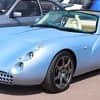 Tuscan
Tuscan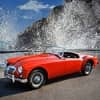 MGA
MGA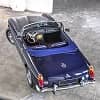 MGB, MGB GT & V8
MGB, MGB GT & V8 MG Midget
MG Midget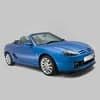 MGF & TF
MGF & TF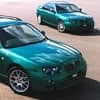 Rover 75 / MG ZT & ZT-T
Rover 75 / MG ZT & ZT-T
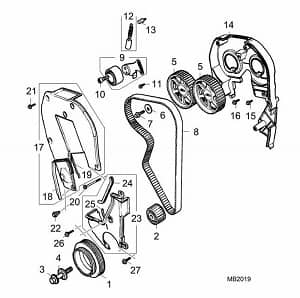
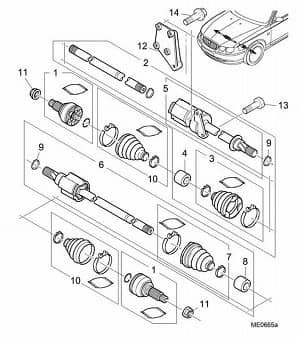


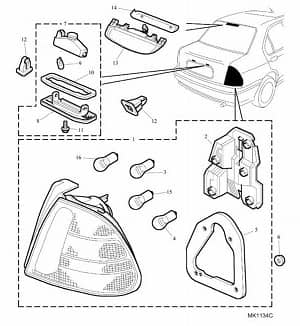
 Classic Mini
Classic Mini Wood & Pickett
Wood & Pickett Autoglym Products
Autoglym Products British Motor Heritage
British Motor Heritage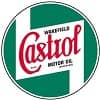 Castrol
Castrol MGCC
MGCC TVR Car Club
TVR Car Club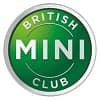 British Mini Club
British Mini Club
